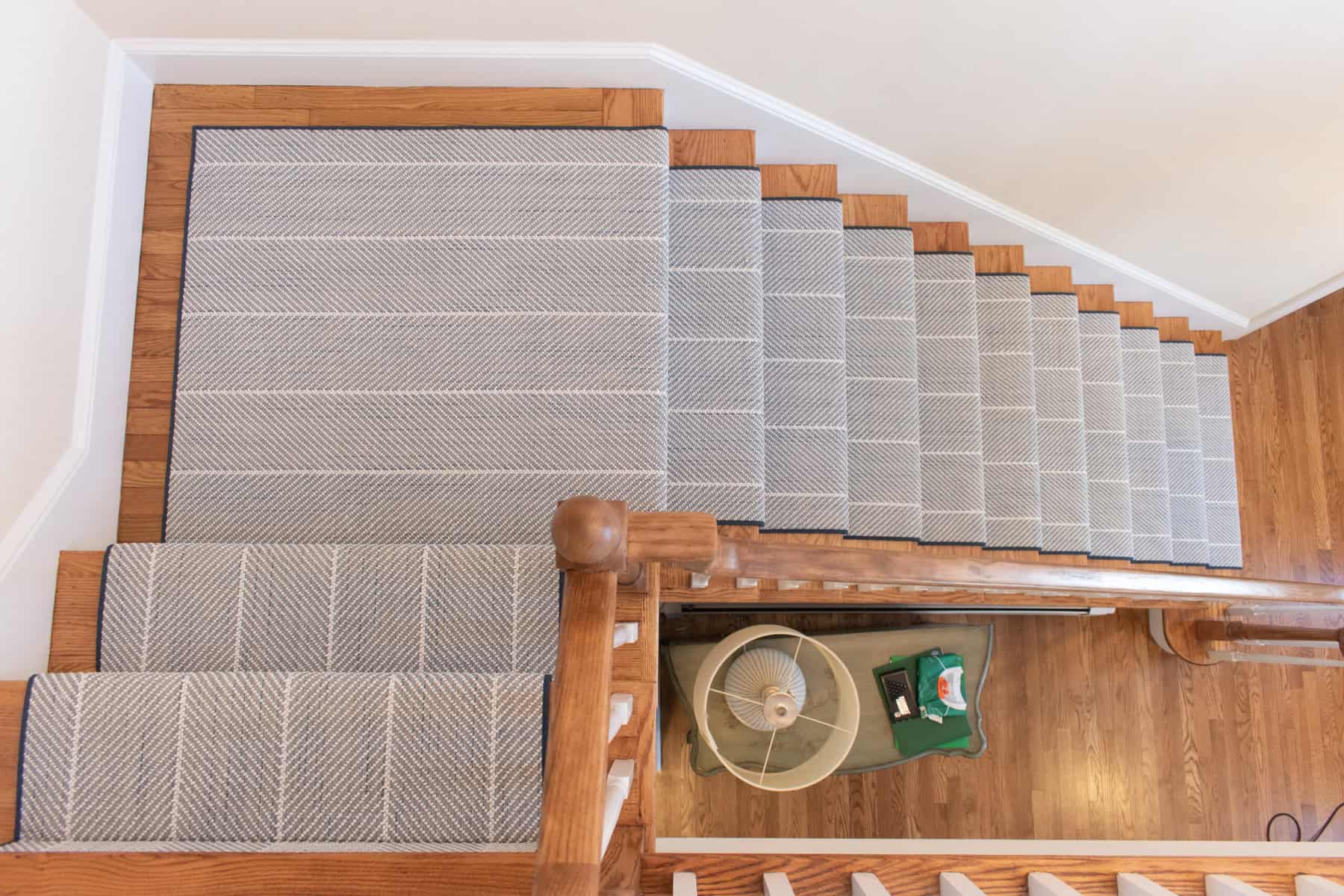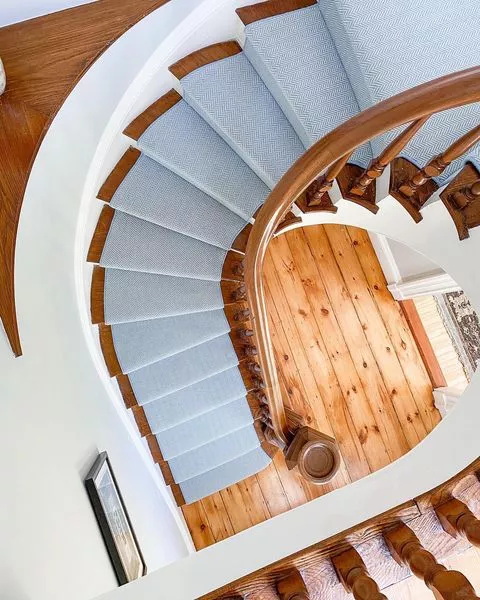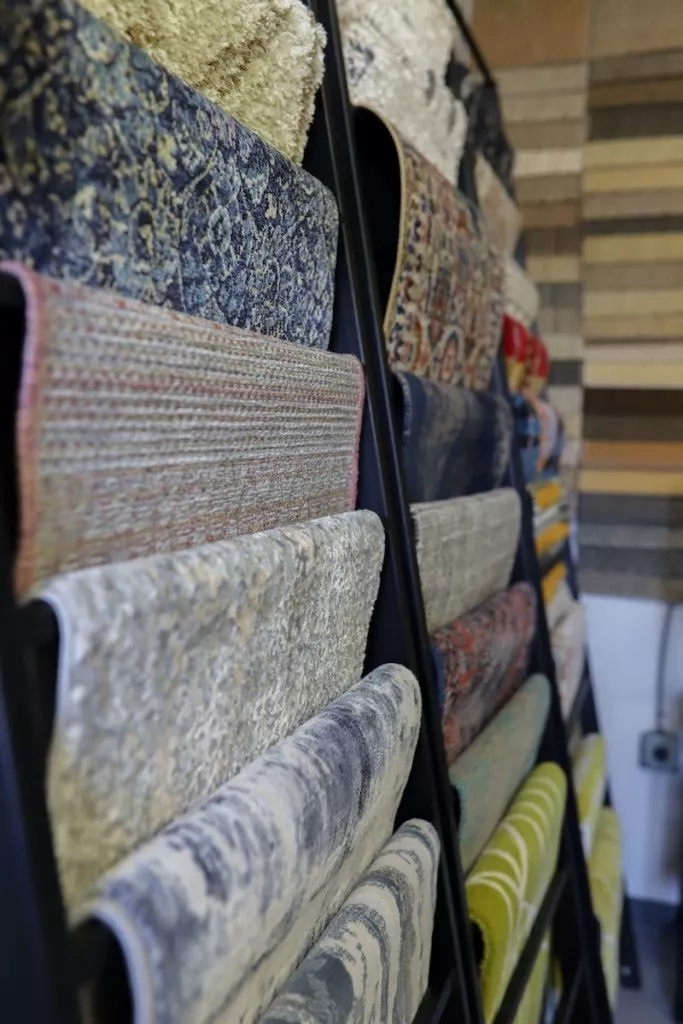Measuring for Carpet: a DIY Guide
If every room were perfectly square, carpet installation and measuring for it would be as easy as pie. Spaces and floors, however, come in all shapes and sizes, and thankfully so; what a boring world it would be if every room were identical. This is why the measuring process often calls for a certain degree of diligence. But if you follow the right steps and the room is a relatively simple layout, you should be able to handle it on your own.
Each space is unique and installing new carpeting can be a big investment of both money and time, so it’s important to get precise measurements prior to any carpet fabrication, purchase or installation. This not only ensures the best fit but also helps determine how much material you need to buy.
At The Carpet Workroom, we’ve put together this handy DIY guide to give you tips on measuring your own space without having to call in a professional. Measuring your own space can speed up the whole process and allow you to save on costs.
However, with a more complex space, one with unique shapes and tricky layouts, you’re better off leaving the measuring to carpet professionals like us. If your measurements are off, you could easily order too much or too little carpet, resulting in extra hassle, lost time and money down the drain.
For expert advice and assistance with your carpeting project, reach out to us today. Family-owned with over 30 years of experience, The Carpet Workroom will work with you every step of the way to bring your vision to life.
Key Considerations Before Measuring for Carpet
Before measuring, it’s important to identify the style for your space because that helps determine the pattern repeat — the distance between the start of one pattern to the start of the next in the carpet. This is also important to consider when measuring for area rugs, as the pattern repeat may affect how much carpeting is needed. For patterned carpet, adding an extra length of carpet to your total may be your best bet in order to line up with the pattern.
Carpet pieces often have to be joined, and the goal is to make the seams between them as imperceptible as possible for your carpet to look its best. Carpeting may also need to be cut to fit around fixtures throughout the room. These factors all play a part in the measuring process.
Square footage/yardage is the U.S. industry standard when it comes to buying/installing carpeting. Always measure in feet/yards as that will make it easier to calculate how much carpeting you will require.
It’s essential to be as accurate as possible, preferably to at least 1/16th of an inch. Keep the tip of your tape flush against the wall and the length of tape flat against the floor as you’re measuring. Make sure to keep the tape as straight as possible; sagging will lead to inaccurate readings.
Take your time. In carpentry, there’s an old saying “measure twice, cut once,” which applies just as well to carpet installation. Double-checking your measurements ensures they’re accurate before moving forward. Measure only once, and you’re bound to have to cut again or buy extra carpet, leading to wasted time, material and money.
Measuring doesn’t take a lot of tools. There are only four you really need: a calculator, graph paper, pencil and measuring tape, preferably one with auto-lock and enough length so you don’t run out of tape when measuring longer lines.
Measure Carpet Perimeter
It’s important to get a general layout of your entire space, even if only measuring for an area rug. Here, your goal is to capture the widest and longest points. Start by measuring each wall from corner to corner. Surprisingly, parallel walls can be different by an inch or two, so measuring all walls is recommended. Round up your measurements to the nearest half foot.
Using graph paper, assign a number value of feet or yards to one square. Draw the perimeter of the room respective to your measurements and block value assigned. Indicate where the doors, windows and other elements of the space are. Your drawing doesn’t have to be perfect but the more accurate the better. Label the measurements for each wall to aid you and your carpet supplier when determining how much carpet you’ll need.
Designate the longest wall “length” and the longest perpendicular or adjoining wall “width.” This is important for directional purposes if you’re planning on going with a pattern. Multiply the two measurements to get the approximate square footage of the room. If you’re buying by the yard, divide the square footage by nine to determine square yardage.
Extra total square footage is typically needed in order to make allowance for seams (rule of thumb being an extra 5%). Additional square footage may be required to place seams in ideal spots.
Measure Carpet for Doors & Closets
All rooms have at least one door or entryway to account for. For walls with doorways (including closet doorways), measure so that you can extend the tape into the middle of the doorway from the opposite wall. This typically adds 2 to 3 inches to the overall measurement. So, when measuring from one wall with a doorway to another wall with a doorway, there may be as much as 6 extra inches added to the overall number.
Each closet should be measured as its own separate room. For irregularly shaped rooms, you’ll also need to measure and cut for smaller pieces to fit into odd angles, recesses and cutouts. Including these shapes and measurements on your drawing will further help you get just the right amount of carpeting.
Measure Carpet for Stairs
Measuring for stairs is a bit more complex than for your typical room. Count the number of steps in your staircase, taking separate count for winders — treads that have non-parallel front and back edges – when a staircase changes direction with no landing. Turning stairs should be measured separately because they typically have different dimensions.
Each step in a staircase has a riser, which is the height. The tread is the depth of each step, the part you walk on. Run the tape over the tread and riser for the total length of one step. Measure the width of the stair at the widest points. To be precise, measure the rise and tread of each step, add those sums together for total length and multiply that number by the width of the stairway at its largest point.
If you trust the uniformity of your steps, you can also calculate your total stair carpet length by multiplying the riser of one step by the number of steps, then adding it to the tread run of one step multiplied by the number of steps MINUS one.
When your carpet leads to stairs going downward (from a hallway or landing), stretch your tape from the opposite wall (or halfway point in a doorway) and wrap it all the way around the top stair’s ledge (the nosing) until it touches the riser below. When measuring for a stair runner, it’s also important to measure for accurate total stair length as the runner needs to fit without gaps or overlaps.
When in Doubt, Call a Carpet Professional
For small projects and simple spaces, we recommend measuring on your own, if possible. Once you have the measurements, come to The Carpet Workroom where we’ll help you get started and provide you with all your carpeting supply and installation needs.
Again, with tricky layouts and unique customizations, we suggest getting the opinion and perspective of professionals before attempting to do it yourself. To ensure the room is measured correctly, it’s best to let professionals like us handle it, before you end up ordering too much or not enough carpet.



